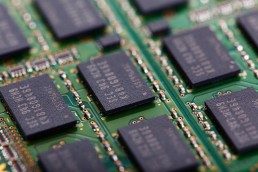Humanity creates an unfathomable 2.5 quintillion bytes of data every day! To help wrap our heads around that ginormous number – that’s enough data to fill 10 million blu-ray discs daily. Obviously, it’s inefficient to burn all of this data to discs. So what technology will be used to store this data into the future? The answer is flash memory technology. Flash memory chips are embedded inside of devices like your phone or your car, and also used in external storage such as SD cards. What makes flash memory so viable is that it can retain data for years without power supplied to the chip (this is known as “non-volatile” memory). But even the best memory has some grey areas.
What are some of the challenges with flash memory technology?
Flash memory has some particular challenges related to reliability and performance, and in those areas Tuxera’s solutions bring significant performance improvements. Here are two such challenges we help solve:
1. Flash memory wears out over time. Inside the memory chip, bits of data are stored on cells. Each time data is erased from or written to a cell, it causes wear. Over time and repeated cycles of writing and erasing, the cells degrade and eventually become unusable. All our file system implementations, especially Reliance Velocity (formerly Tuxera Flash File System), write data more efficiently to reduce wear associated with read/write cycles, thereby extending the lifetime of flash memory.
2. Typical file system software can cause data fragmentation. While built-in features reduce fragmentation, this phenomenon still causes a decrease in performance over time. That’s because the system has to jump around the memory layout to read or write all the bits of data that form a file. Our software is specially engineered to write data blocks to the memory in a way that keeps blocks close to each other. It wastes as little space as possible on the memory, so the system can perform at maximum speeds.
Strong involvement in the ecosystem is key
None of what we do is in a vacuum, however. We have strong relationships with leading flash memory manufacturers, and work with each vendor’s hardware to improve performance and lifetime.
What’s the best way to handle data stored on flash memory? Follow the link below to find out more about the world’s most flash-friendly file system.


